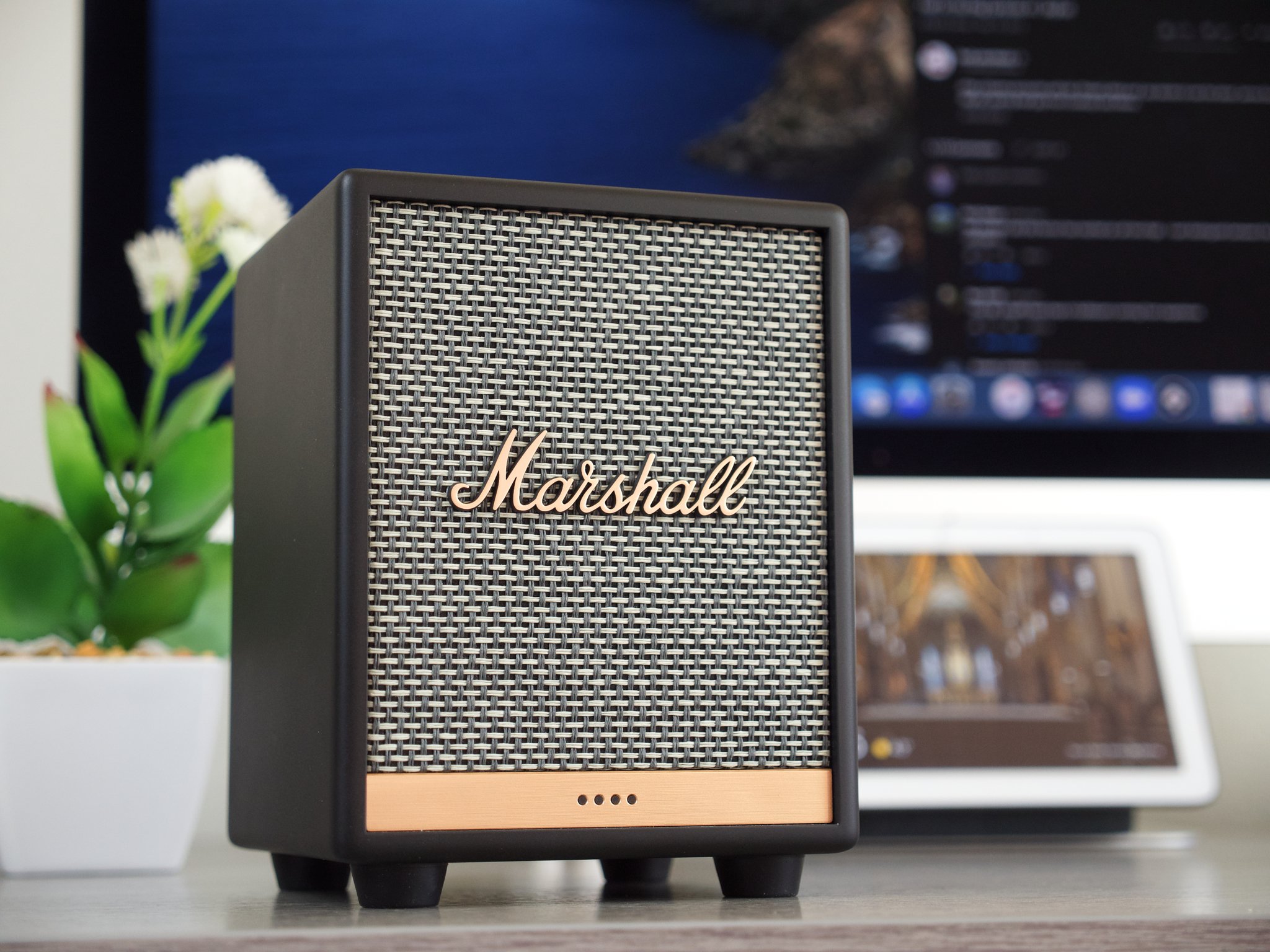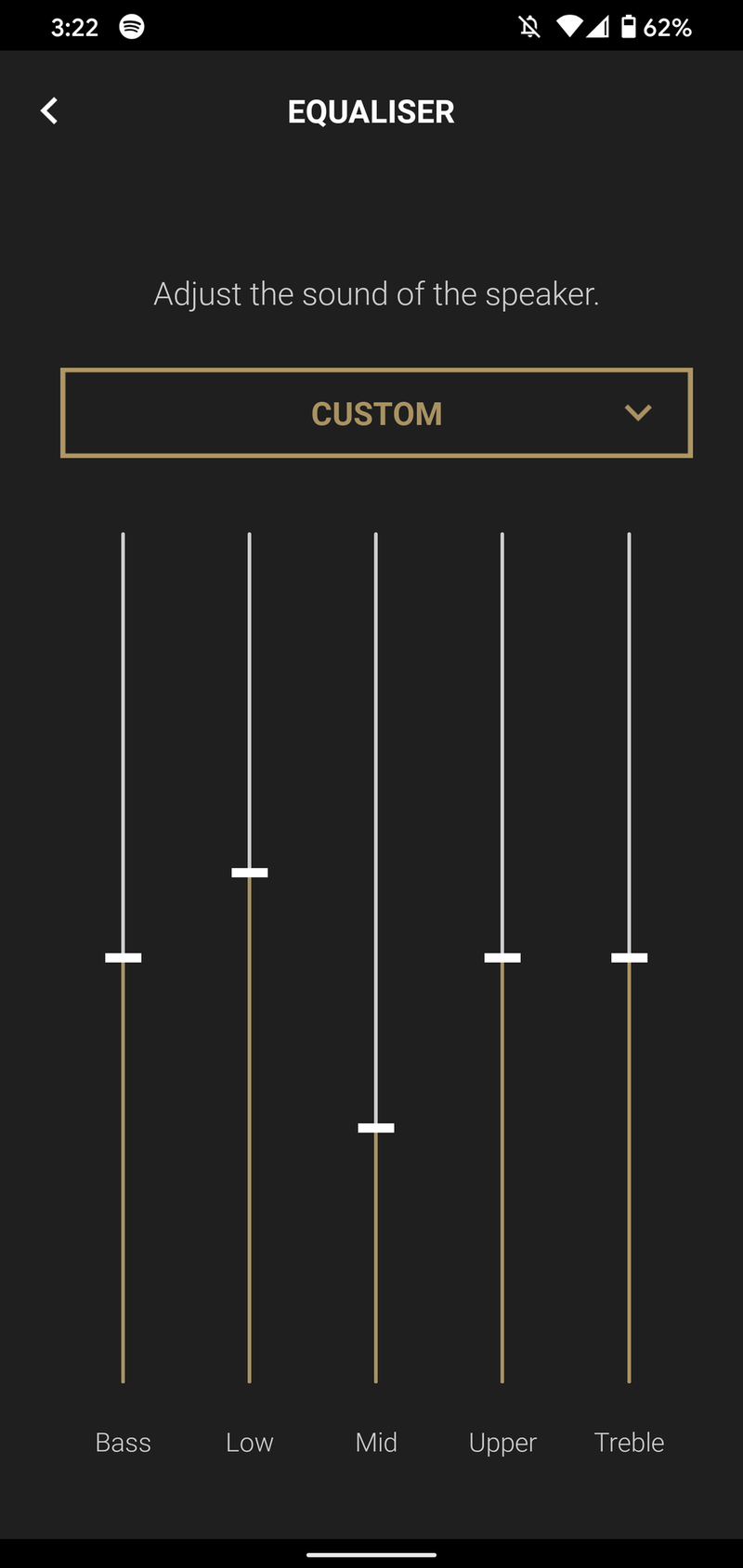Android Central Verdict
Bottom line: Marshall's Uxbridge Voice is a direct competitor to speakers like the Sonos One, and overall, it's a fantastic alternative. It has one of the most unique designs out there, and with physical buttons for bass and treble settings, is just as functional as it is eye-catching. The Uxbridge Voice also has excellent audio with punchy bass, comes with Alexa built-in for hands-free commands, and can be used with other Marshall speakers to create a multi-room system.
Pros
- +
Absolutely gorgeous hardware
- +
Physical bass and treble controls
- +
Rich, booming sound with deep bass
- +
Can be used for multi-room audio
- +
Alexa is built-in
Cons
- -
Music can sound a little muddy sometimes
- -
Alexa and Google Assistant models are separate
- -
Tough competition
Why you can trust Android Central
Over the past year or so, I've gotten really into the whole Sonos ecosystem. It started with a Sonos Beam for the living room TV, a couple of Sonos Ones for my office, and I'm still itching to add more to the collection. When they say your first Sonos speaker won't be your last, they aren't kidding.
Here's the thing, though. Sonos isn't the only company out there offering high-quality speakers that can be used for multi-room audio. Marshall is also doing what it can to break into this space, with its latest attempt taking the form of the Marshall Uxbridge Voice. It's a mono smart speaker with a built-in voice assistant that can either be used on its own or part of a larger system.
For all intents and purposes, the Uxbridge Voice is Marshall's attempt at directly competing with the Sonos One — arguably one of the most iconic speakers in the current Sonos lineup.
I wouldn't go as far as to say that the Uxbridge Voice completely dethrones the Sonos One, but it's absolutely worth competing on the same (sound) stage.
Marshall Uxbridge Voice What sounds great
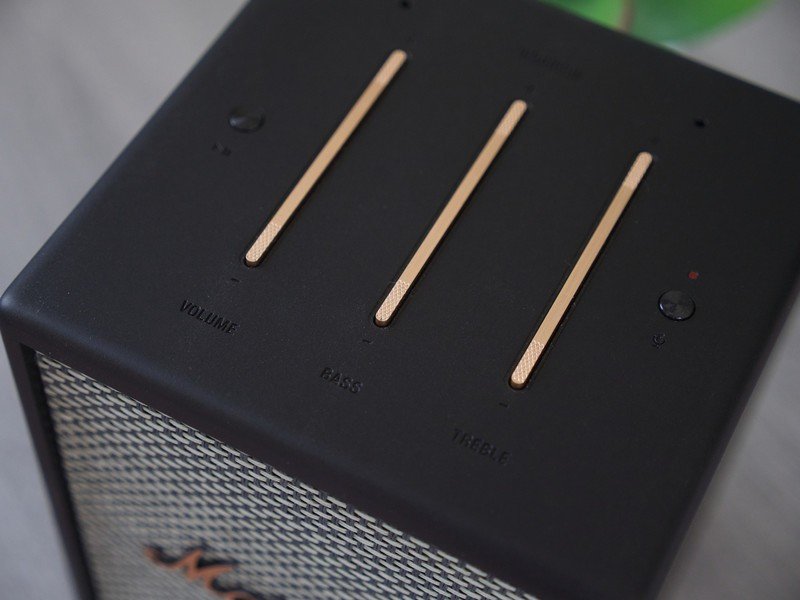
If there's one thing that Marshall nails with the Uxbridge Voice, it's the design. This is a strong attribute across the company's entire product line, and that iconic aesthetic is just as present as ever here. For those that may not know, this is the same Marshall that's been making guitar amps since 1962 — hence the amp-like design of the Uxbridge Voice.
The fabric stitching on the front looks outstanding, the gold/black design is a lot more interesting than most other smart speakers, and I absolutely adore the buttons on the top. You see those three metal lines on the top of the Uxbridge Voice? From left-to-right, they're used for controlling the volume, bass, and treble. Accompanying those are small, circular buttons for playing/pausing your music and to mute the microphone.
Not only do all of the buttons feel fantastic to press, but having physical controls on the speaker to adjust bass and treble at any given time is wonderful. This is infinitely better than on the Sonos One, where to adjust the EQ you have to open the app and go to Settings -> System -> Sonos One -> EQ.
Get the latest news from Android Central, your trusted companion in the world of Android
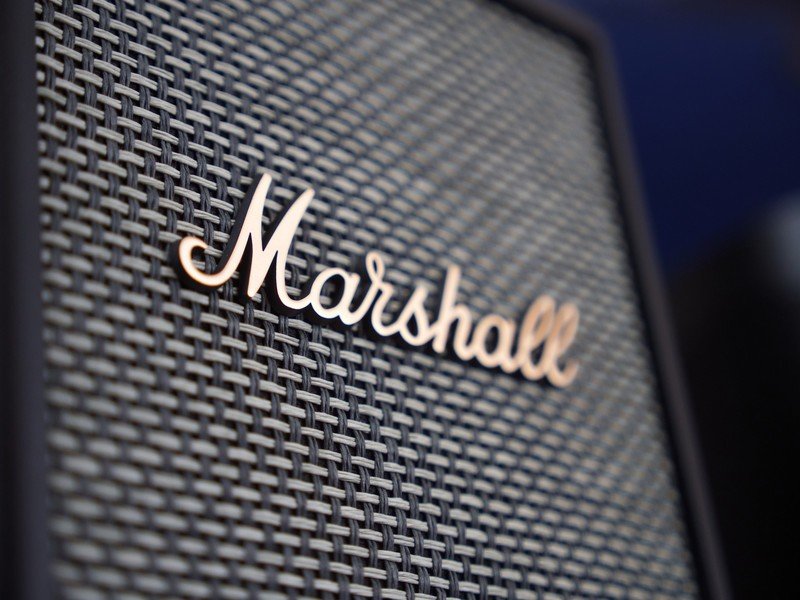
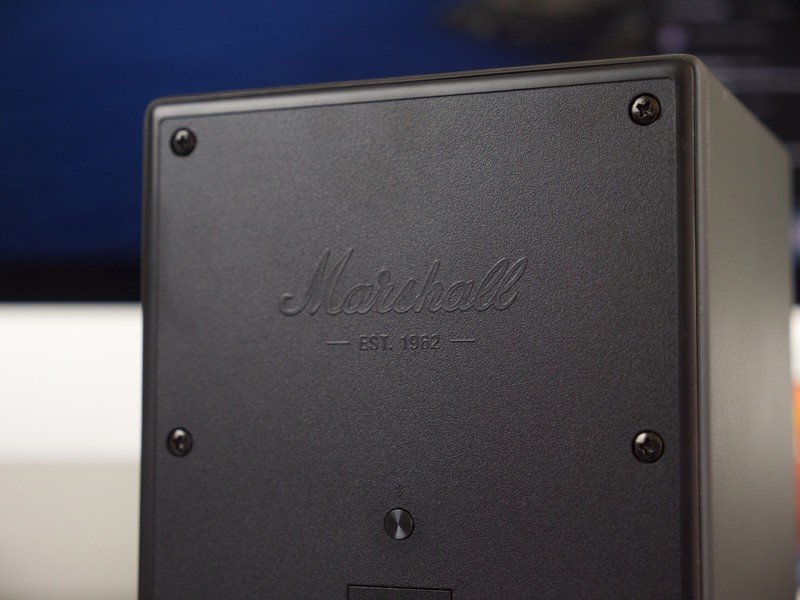
As much as I appreciate how easy it is to change the Uxbridge Voice's EQ settings, I don't think you'll need to that often. Right out of the box with all default settings, the speaker sounds fantastic.
The Uxbridge Voice is a small speaker that kicks out big sound.
I've noticed that the Uxbridge Voice tends to favor the low-end with powerful bass, and I don't mind that one bit. It's surprising that a speaker this small can sound so impactful, but it does.
If you don't like how the Uxbridge Voice sounds (which I think is very unlikely), there are even more EQ customization options in the Marshall companion app. Marshall gives you a few pre-made audio profiles — including Flat, Rock, Metal, Pop, Hip-hop, Electronic, Jazz, and Spoken. You can tweak these if you like, and there's also a Custom option where you can really experiment with your tunes. All profiles have sliders to adjust bass, low, mid, upper, and treble.
Source: Android Central
Seeing as how it's 2020, a speaker can't be without an assortment of smart features. In these regards, Marshall delivers quite handsomely.
The model I have comes with Amazon Alexa built-in, and once you get it configured with the Alexa app, you can say "Alexa" at any time to trigger the voice assistant and have it do whatever you want. On top of that, you can group the Uxbridge Voice with other Alexa speakers for multi-room audio, or if you have multiple Marshall speakers, group it just with them. I don't have other Marshall hardware to test that aspect, but everything with Alexa has worked perfectly fine with my unit.
Marshall Uxbridge Voice What sounds off
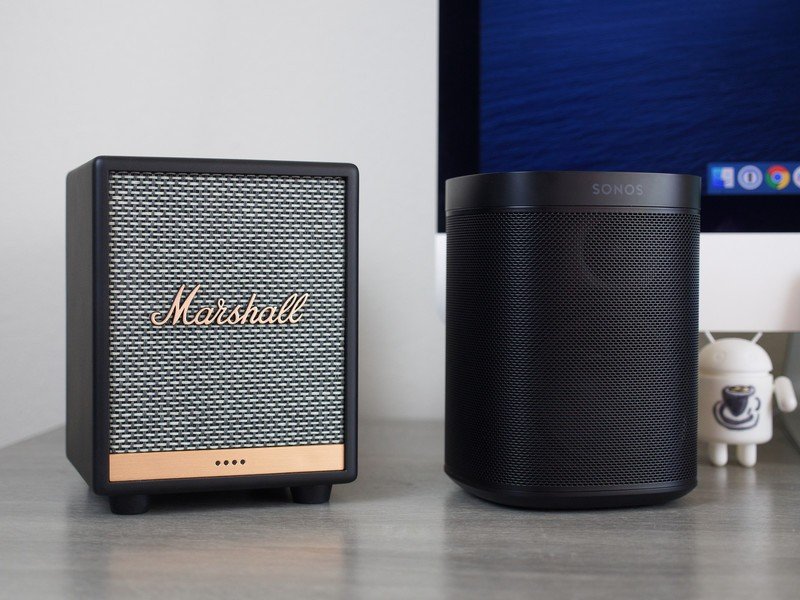
Marshall got almost everything right with the Uxbridge Voice, but there are a couple of sticking points that hold it back from being an instant recommendation.
While I thoroughly enjoy listening to music on the speaker, it isn't perfect. I noticed that some songs sound ever-so-slightly muffled compared to the Sonos One, which tends to have a clearer, more balanced sound profile. It's not a deal-breaker by any means, but listening to the two speakers side-by-side, it is something that's fairly apparent.
Then there's the way that Marshall handles voice assistant integration. While competing speakers like the Sonos One aren't perfect in these regards, I appreciate that Sonos allows you to buy the One and switch back and forth between using Alexa or Google Assistant.
Comparatively, Marshall sells two different models of the Uxbridge Voice — one with Alexa and one with Google Assistant. I suppose this isn't that big of an issue if you're already committed to one digital helper over the other, but it feels more limiting than it needs to be.
Marshall Uxbridge Voice Should you buy it?
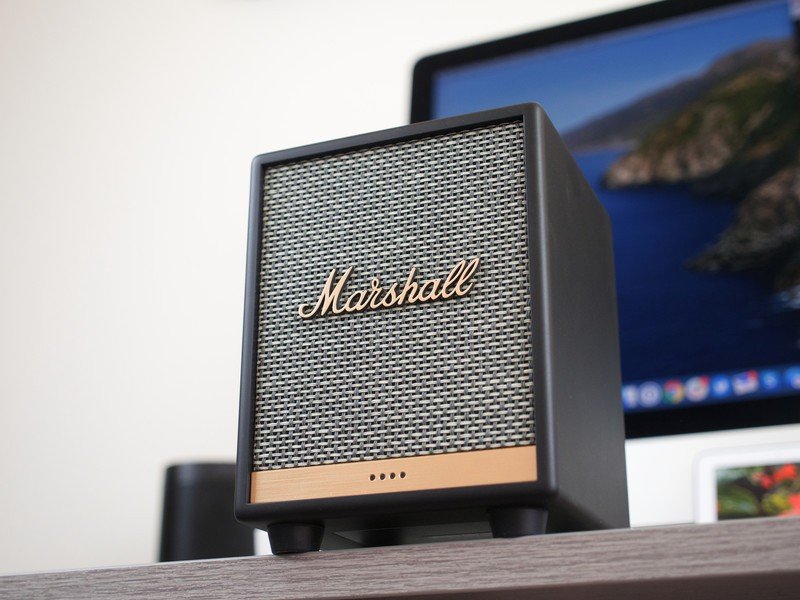
With all of that out of the way, I think it's safe to say that I really like the Marshall Uxbridge Voice. Even if it isn't perfect, there's something that's just so charming about the speaker.
If we're just talking audio quality and nothing else, I'd have to give the edge to the Sonos One. Maybe it's personal preference, but the clearer, more well-rounded audio sounds better to my ears that the bass-heavy Uxbridge Voice. On that single metric, Sonos wins.
Lucky for Marshall, that's not the only factor that comes into play. From a design and useability standpoint, the Uxbridge Voice is the clear winner in my books. The distinct Marshall aesthetic looks ten times better than most competing speakers, it's wonderfully compact, and the physical controls for adjusting bass and treble are a bigger deal than they look on paper.
4 out of 5
Whether you want to use the Uxbridge Voice on its own or pair it with other Alexa/Marshall speakers, it's an incredibly tempting purchase. It may not be your first choice if you're in the market for a $200 smart speaker, but if you give it a chance, I don't think you'll regret it one bit.
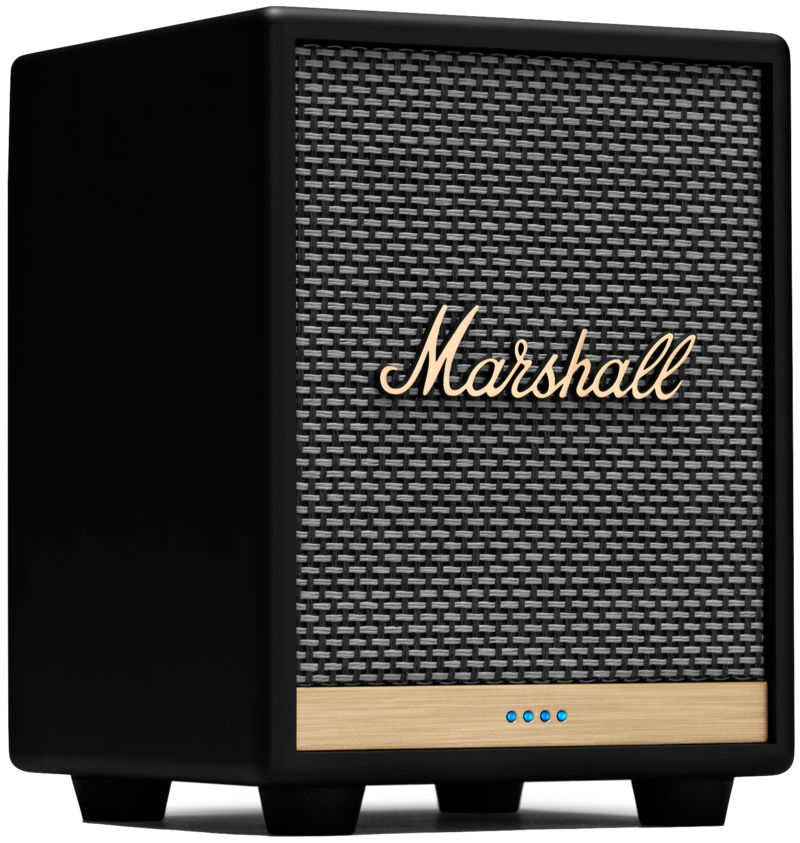
Marshall's Uxbridge Voice is a direct competitor to speakers like the Sonos One, and overall, it's a fantastic alternative. It has one of the most unique designs out there, and with physical buttons for bass and treble settings, is just as functional as it is eye-catching. The Uxbridge Voice also has excellent audio with punchy bass, comes with Alexa built-in for hands-free commands, and can be used with other Marshall speakers to create a multi-room system.

Joe Maring was a Senior Editor for Android Central between 2017 and 2021. You can reach him on Twitter at @JoeMaring1.
